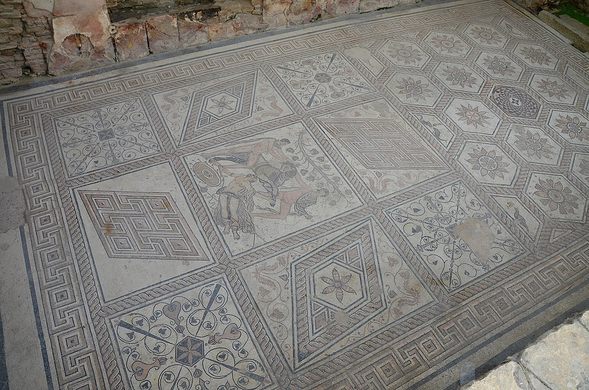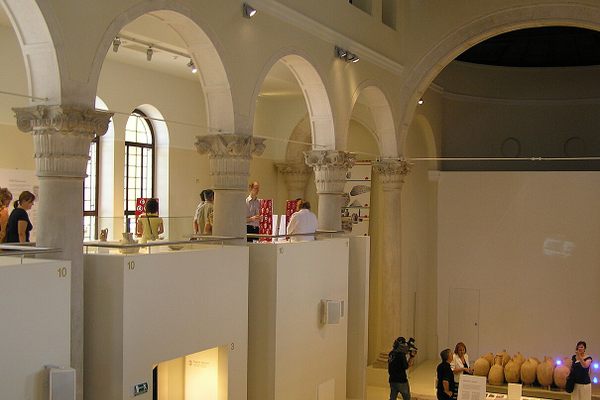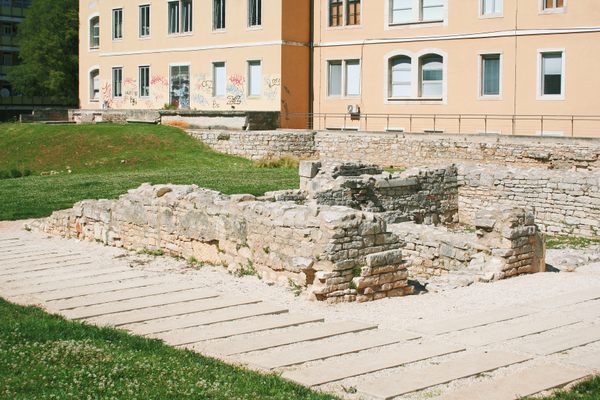Kažnjavanje Dirke (The Punishment of Dirce)
A Roman mosaic depicting a classical myth was only rediscovered after bombing during World War II.
The story of Dirce’s punishment goes something like this: Dirce was a powerful demigoddess, who married Lycus, king of Thebes. Her niece Antiope was impregnated by Zeus, and she gave birth to twin sons Zethus and Amphion. Dirce was not fond of Antiope, so despite fleeing due to her shame at her pregnancy, Dirce had Lycus force her back to Thebes. Her sons did not return with her and were instead raised by a shepherd.
When Antiope escaped again years later, she ran into Zethus and Amphion, now young adults. Dirce found the three of them and, by bewitching the sons, convinced them to tie Antiope to a bull so she would be dragged to her death. When their shepherd guardian broke the spell, they recognized their mother. The punishment became Dirce’s fate instead. Tied to the bull, Dirce died. In the spot where her body came to rest, the god Dionysus brought forth a spring. This legendary spring came to become a symbol of Thebes.
When the Roman Empire co-opted much of Greek culture, the myth of Dirce (or Dirke) was depicted in several of their works that survive to date. The best-known is probably the marble sculpture called the Farnese Bull, now found in a museum in Naples. This mosaic in Croatia is another example. Dated to the 2nd or 3rd century, the mosaic is more recent than Pula’s Arena, showing how long Roman presence lasted in this part of Istria.
Having been part of a Roman residence, this floor was eventually covered and lost, until bombing of a church during World War II revealed it two meters below ground. After the debris was cleared, the work was left in situ as it had remained exceptionally well-preserved. The Punishment panel depicts Dirce, the sons and bull, and is surrounded by other panels depicting geometric motifs. A hexagonal “hive” with floral patterns completes the floor.
Know Before You Go
As of late 2023, the mosaic and surrounding area are not very well-lit at night, so it's probably better to view it in the daytime.























Follow us on Twitter to get the latest on the world's hidden wonders.
Like us on Facebook to get the latest on the world's hidden wonders.
Follow us on Twitter Like us on Facebook